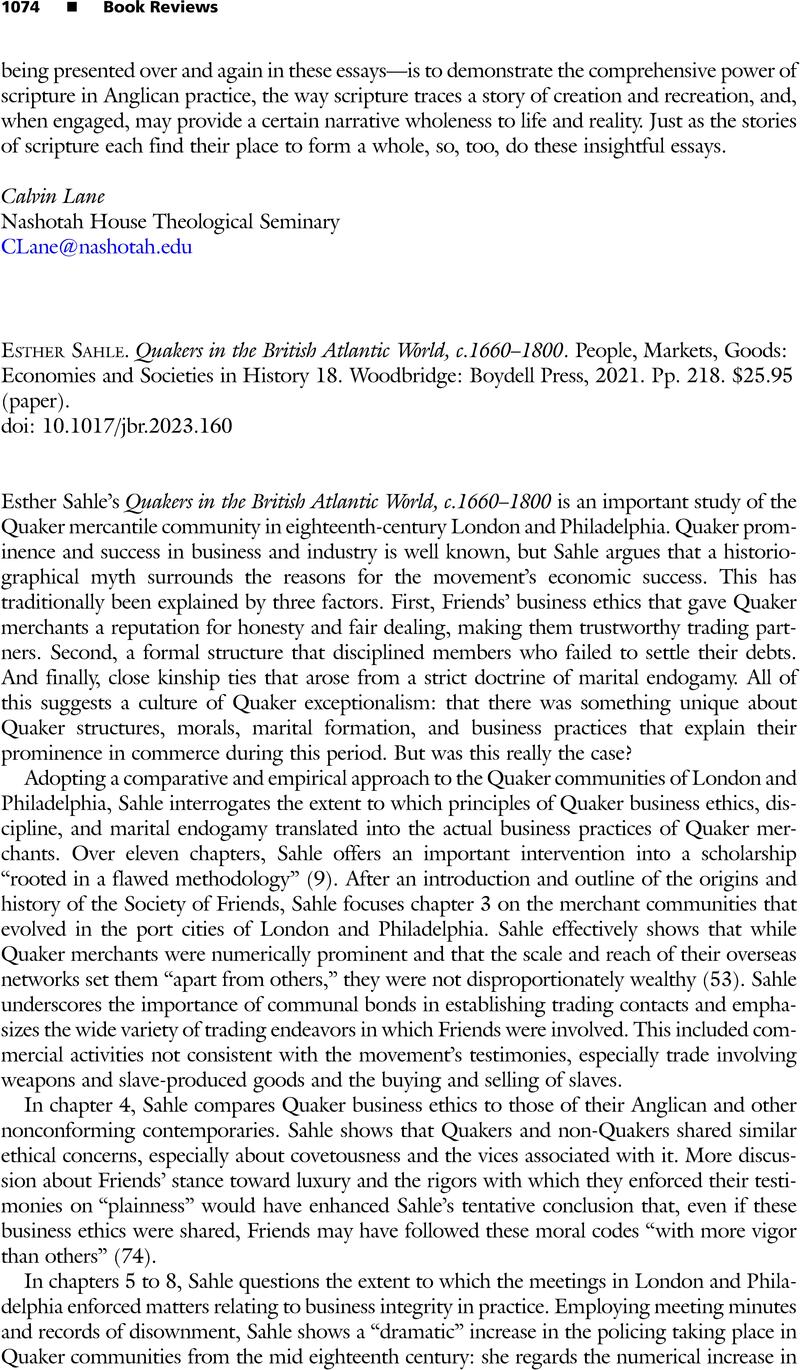No CrossRef data available.
Article contents
Esther Sahle. Quakers in the British Atlantic World, c.1660–1800. People, Markets, Goods: Economies and Societies in History 18. Woodbridge: Boydell Press, 2021. Pp. 218. $25.95 (paper).
Review products
Esther Sahle. Quakers in the British Atlantic World, c.1660–1800. People, Markets, Goods: Economies and Societies in History 18. Woodbridge: Boydell Press, 2021. Pp. 218. $25.95 (paper).
Published online by Cambridge University Press: 19 February 2024
Abstract
An abstract is not available for this content so a preview has been provided. Please use the Get access link above for information on how to access this content.

- Type
- Book Review
- Information
- Copyright
- Copyright © The Author(s), 2024. Published by Cambridge University Press on behalf of The North American Conference on British Studies



